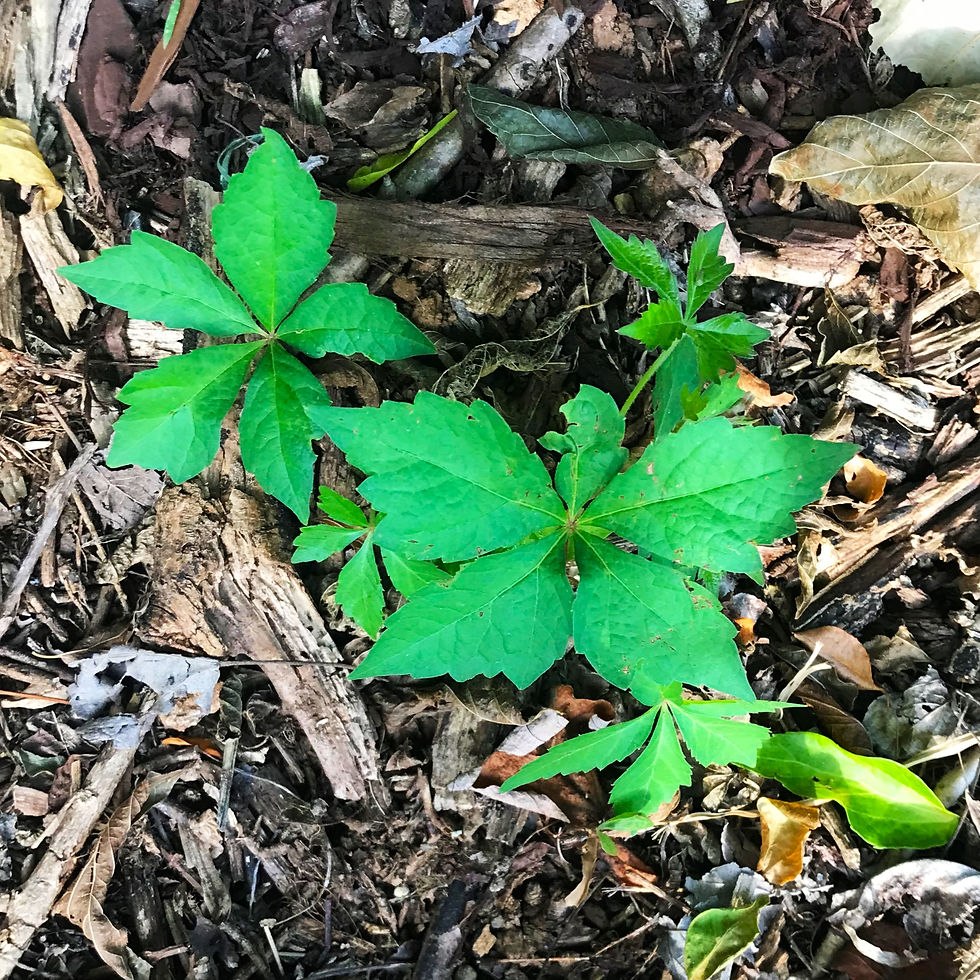Looking for the Root Causes
- Denise Worpell

- Jun 21, 2022
- 6 min read
Updated: Sep 6, 2022
It’s frustrating. Recently I’ve been sick. I had to have some lab work done before going to see my general practitioner. I waited until I was better and went and had my labs done. It was difficult just getting the labs back, but that’s another story… My general practitioner did a quick test in the office since we couldn't access the lab work done the previous week. He told me my A1c was a 6.7. Supposedly quite healthy. When I finally got into my LabCorp results, my A1c showed 9. So why is there such a difference in my A1C over a period of one week?

Not only was I getting over some sort of cold, but there were other factors affecting my A1c. There are multiple confusing factors in life that can be quite confusing and mess with your blood sugar. Many can be weather related or a natural result of the warmer weather. If it causes a high stress reaction, especially if cortisol is released, it’s going to mess with your blood sugar. We can either stress out about our blood sugar, or we can figure out what’s causing it. Then we'll be on the right track to figure out how to change it.

Another problem came from an outdoor source, and my natural tendency to enjoy going outside. I do some property management on the side for my neighbors. I cut the grass, weed eat and pull some weeds. Unfortunately, these weeds include poison oak. Poison oak's oily resin, urushiol, gets on my skin and causes an allergic reaction. This allergic reaction upsets my body causing the immune system to respond which makes my blood sugar go up. To add insult to injury, medicines used to treat poison ivy, oak, or sumac may cause your blood sugar to rise temporarily as well. Urushiol can stick to pet fur as well; and my Lucy loves to play in it!
There are some factors affecting blood sugar that aren't weather related... I went to the podiatrist last week. He’s quite a comedian with one heck of a great bedside manner. I have two very bad looking big toenails. My doctor tells me there are three options. One is to ignore it. A second option is to cut out the toenail. This requires applying a toenail polish medicine for a year and hoping that it comes back in better shape. The third option is to get rid of the toenail and burn the toenail bed to prevent it from growing back in another time. While I decide, he goes to YouTube the foot surgery. Just kidding!
I’ve known two other diabetics that had to have their big toe removed due to infection. The big toe makes a difference in balance so, I'm taking this very seriously. This toenail has come off multiple times. It has never grown back healthy. It doesn’t cause pain, but there is always red skin around the nail bed. This red skin shows this area is not healthy and stays permanently irritated. I chose option three, to just get rid of it completely.
Again, minor surgery will cause the blood sugar to rise at first. If I keep my blood sugar well maintained, the toe will heal faster than someone with uncontrolled blood sugar. It will also help prevent fungal infections that occur in the summer due to warm moist places for fungi to hide, like between toes. This isn't just the toe. It includes preventing yeast infections for female diabetics.
Today is the summer solstice. It is the longest day of the year; and the first day of summer. It is also when the summer vegetables start coming in. They are great to help with blood sugar control and hydration. This week's recipe uses zucchini.
Zucchini is in the squash family. It is usually harvested while it's quite small at 10 inches, but they can grow to over 3 feet. When they get this large, you may want to freeze them and put them away for soups and stews in the winter. This process includes slicing the zucchini into 1/2-inch slices, tossing the slices in boiling water for 1 minute, and using a slotted spoon to immediately toss the slices in icy water for 4 minutes. Next dry the slices with a towel. Lay them out on a tray, and freeze them for 1 to 2 hours. Take the slices out and store them in freezer bags. Use a straw to suck out all the air from the bag when you close it. This process works for summer squashes and eggplant with varying times for boiling, blanching (ice water bath post boiling), and tray freezing. If you prefer your zucchini fresh, you may want to test out this week's recipe...
Zucchini Boats
Ingredients:
1 gigantic zucchini, 1 lbs.
1 egg
1/4 cup heavy whipping cream
1/8 cup sun-dried tomatoes, julienned + 10 pieces to top the boats
1/16 cup red peppers
1 tablespoon almond flour
1 teaspoon nutritional yeast
1/2 teaspoon garlic, minced
1/4 teaspoon oregano, powdered
1/4 teaspoon rosemary, powdered
1/4 teaspoon basil, crushed
1/4 teaspoon salt
1/16 cup Parmesan cheese

Directions:
1.) Preheat the oven to 350°.
2.) Wash the zucchini. Cut the ends off each side.
3.) Cut the zucchini in half and scrape out the insides to form your boats.
4.) Line a baking sheet with aluminum foil shiny side down on the baking sheet. Set your boats on the sheet and set to the side.
5.) Place the scraped out zucchini insides in a food processor and add the rest of the ingredients except the parmesan.
6.) Blend the stuffing until the ingredients have a ricotta like consistency.
7.) Pour the mixture into the boats. Top with 5 sun-dried tomato slices per boat.
8.) Put the boats in the oven; and cook for 30 minutes.
9.) Pull the boats out and top with parmesan cheese. Return it to the oven; and cook for 20 more minutes.
10.) Remove the zucchini from the oven and allow it to cool for three minutes.
Just be aware this vegetable is nutrient dense with 11 different vitamins and minerals. The low caloric content means you can enjoy more without having to worry about weight gain. The water content in zucchini will assist in maintaining hydration. The high level and type of antioxidants may help our skin, eyes, and heart health. The carotenoids, antioxidants, may even provide protection against prostate cancer. Just make sure to eat the skin because this is where the majority of these compounds are found.
Zucchini is good for your digestive health. It has insoluble fiber that helps prevent constipation. It feeds good digestive bacteria that produce short chain fatty acids that help reduce inflammation in the body. They may be able to reduce symptoms of some stomach disorders like Crohn's disease, irritable bowel syndrome (IBS), and ulcerative colitis.
It can also help maintain low blood sugar. It has an extremely low carbohydrate count. Zucchini can be made into a noodle replacement with a spiral slicer or a veggie bullet that has a noodle making attachment. Zucchini is loaded with fiber that prevents blood sugar spikes and may increase insulin sensitivity. High fiber intake may lower your risk for heart disease as well. Zucchini may aid eye and bone health and stabilize the thyroid.
Sources: "Itchy, Irritating Poison Ivy"
Mayo Clinic 06/29/2020
"12 Health and Nutrition Benefits of Zucchini"
Healthline 02/19/2019
I‘m always working in the garden. It keeps getting hotter. It is very easy to get a sunburn while harvesting vegetables or cutting flower arrangements. Sunburn does cause our blood sugar to rise. It also stresses the system. The best option is to try not to get out in the sun between 10 am to 4 pm. If you must get out in the heat, wear and reapply plenty of sunscreen and stay well hydrated with water and drinks that replenish your electrolytes. The G2 Gatorade product used to work just fine for my type 1 diabetic co-worker.
Inspiration for new recipes comes from the garden; but if you don't like the vegetables that I'm selecting, please suggest one you do like. I'll create a diabetic friendly recipe with it, just let me know by leaving a note below. I've learned how to swap blood sugar spiking ingredients for others with a lower glycemic index. It may take a week or two, but I love the challenge. Please comment, like, share, and come back next week for more recipes, ideas, and tips. Subscribe to the website, if you would like weekly email reminders to add more recipes to your recipe book.
Disclaimer: This is not medical advice, but a compilation of research from medical sites. Make sure to see your doctor and have up-to-date lab work.










Comments